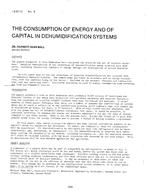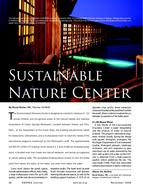The climatic design condition tables that comprise the Climatic Design Information chapter of the ASHRAE Handbook of Fundamentals (Chapter 14 in the 2013 version) has been used by generations of engineers for sizing HVAC equipment. The ASHRAE design procedure has evolved over time from using single design temperatures to calculate heating and cooling design loads, to a proliferation of hypothetical “design days” that are still built around design temperatures as the daily peak, with the temperatures for the other hours filled by fitting a standard daily temperature profile to an average daily temperature range calculated for the hottest month.
It is important to recognize that while there are statistical bases for each climatic parameter, there has been no statistical verification of the ASHRAE design day procedure in its entirety. The Integrated Surface Database (ISD) maintained by the National Climatic Data Center (NCDC) contains the hourly climatic records of up to 13,600 weather stations around the world spanning several decades. These data have been used to extract the actual days that match ASHRAE design day criteria, e.g., 0.4% peak daily dry-bulb temperature, etc. These days can then be averaged as an alternate method to produce “real” design days, as well as to evaluate the validity of the current ASHRAE Design Days. This comparison has been done for over 211 TMY2 locations in the U.S. and 235 IWEC locations outside of the US and Canada.
A second part of this paper investigates the best length of record for calculating climatic design conditions taking into account possible climate change or decadal trends in the climatic data. Previous studies have implicitly assumed that climatic conditions were stochastic but constant over time, and sought only to determine the minimum period of record necessary to replicate the results from the long-term data. This study, instead, calculates the design conditions for 60 US and 44 international locations with up to 25 years of record ending in 1988, and compares them to the design conditions calculated from the following 25 years from 1989 through 2013.
Citation: ASHRAE Papers CD: 2014 ASHRAE Annual Conference, Seattle, WA
Product Details
- Published:
- 2014
- Number of Pages:
- 8
- File Size:
- 1 file , 2.5 MB
- Product Code(s):
- D-SE-14-C074


